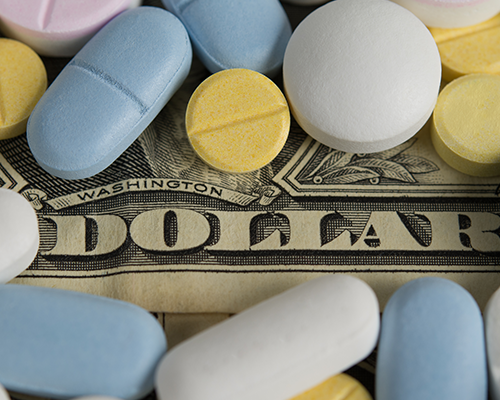There is no lack of conversation about rising prescription drug costs on the national stage, but progress has been lacking. While Washington deliberates, Americans continue to feel the impact. A small fraction of the financial impact is illustrated in the Institute for Clinical and Economic Review (ICER) report on 2020 Unsupported Price Increases (UPI) of prescription drugs in the United States. The ICER found that unsupported price increases on only 7 treatments, even after pharmaceutical rebates and other concessions, cost the US health system an additional $1.67 billion over baseline in 2020.1 In addition to brand name drugs and innovation imposing financial pressure on the healthcare system, generics also play a significant role. The generic market is a complex space where we have seen low profitability, manufacturer consolidation, and a lack of transparency resulting in unchallenged price increases and supply concerns. Competition is the fuel of pricing trends. With a lack of competition comes unchallenged price increases, which ripple through the entire healthcare system. Several alternative drug makers have emerged to change the trajectory and disrupt current pharmaceutical manufacturers’ business models. Successfully and more efficiently bringing lower cost products to market may force current commercialization practices to respond with an equal effort of transparency and efficiency.
Alternative drug makers have begun a battle against rising drug prices and are quickly gaining allies. Several groups are focusing on generics, such as Civica Rx, a nonprofit organization founded in 2018 by a hospital consortium with the simple mission of ensuring that essential generic medications are accessible and affordable. Civica Rx’s initial focus was supplying hospital systems with the creation of a subsidiary CivicaScript and partnerships with insurers such as Anthem, Inc and the Blue Cross Blue Shield Association. They will begin providing 5 to 6 generic medicines to individuals as early as 2023 through retail and mail-order pharmacies.2 Likewise, the nonprofit organization NP2 strives to create lower-priced generic IV oncology products by partnering with other nonprofit organizations and pursuing licensing deals with for-profit drug manufacturers. While not a drug maker, Mark Cuban has brought a lot of attention to the issue of generic drug affordability and unfavorable pricing models. He promises to provide a transparent fixed-rate mark-up by combining manufacturing, wholesale distribution, and PBM services as one company and challenging the traditional PBM business model. Additionally, Phlow is addressing pricing from the supply chain angle is Phlow. They are committed to disrupting the status quo in the generic supply chain by utilizing advanced manufacturing technologies to more efficiently produce essential medicines that are in short supply.3
Increasing generic competition and improving the supply chain are achievable and can decrease overall drug spending and lower out-of-pocket costs, but taking on high-cost brand name drugs is a greater challenge. EQRx is taking on that challenge and gaining some big supporters. It has its sights on medications for cancer and inflammatory disorders to sell at “radically lower prices” than the competition by creating various stakeholder partnerships, and CVS Health and Geisinger are on board.4 One of their first targets is an anti-programmed death-ligand 1 (PD-L1) antibody at a time when companies are diversifying portfolios by developing lower-cost “me-too” products, and the FDA seems to be increasingly skeptical towards cancer immunotherapies. Clinical trials conducted outside the United States and/or in a single country may face increased FDA scrutiny, which may threaten approval. EQRx plans to boost their partnerships with pharmaceutical manufacturers outside of the United States and lower cost research models by conducting trials in US sites, including a head-to-head study comparing their PD- L1, sugemalimab, with currently approved treatments.5 The additional data will increase the possibility of FDA approval and encourage payer and provider adoption.
Creating affordability, increasing access, and advancing innovation should be a common goal of all healthcare systems stakeholders. The EQRx model is designed to redefine how innovative treatments are brought to market and improve affordability, but is the US infrastructure ready for it? It is certainly appealing to payers who long for anything to improve affordability. Gaining provider adoption will be needed to create competition and widely drive prices down. Satisfying regulatory requirements and withstanding counteractions by other manufacturers will be critical to EQRx’s success. It is somewhat reminiscent of the biosimilar experience and evolution.
Alternative drug makers are making improvements in what has been an antiquated R&D model for both new products and older generic essential medications. Their efforts may force all manufacturers to evaluate their infrastructure and diversify portfolios. Finding opportunities for technology-supported infrastructure improvements will improve commercial success potential. Considering clinical trial design with a decentralized approach and lessons learned from virtual execution of care during the pandemic will enhance efficiencies and lower research costs. If the alternative pricing mechanisms being developed are successful, transparency will become more than a buzzword, and pricing rebate dependency will be challenged. It is too early to tell if these alternative drug makers can disrupt the status quo. Still, they have successfully highlighted the issues and brought the concern about the sustainability of the current pricing trends to the forefront.
References
- ICER identifies most significant 2020 US drug-price hikes not supported by new clinical evidence. Institute for Clinical and Economic Review. November 16, 2021. https://icer.org/news-insights/press-releases/icer-identifies-most-significant-2020-us-drug-price-hikes-not-supported-by-new-clinical-evidence/
- CivicaScript, the newly named Civica initiative to serve patients in retail markets, announces a new health plan partner, a new president, and a new drug manufacturing partner. CivicaRx. (June 16, 2021, June 16. https://civicarx.org/wp-content/uploads/2021/06/CivicaScript-FINAL_June.16.2021.pdf
- Spinner J. Pharmaceutical industry must-fix broken supply chain: Phlow. Outsourcing-Pharma.Com. Published August 3, 2021. https://www.outsourcing-pharma.com/Article/2021/08/03/Pharmaceutical-industry-must-fix-broken-supply-chain-Phlow#
- Cohen, J. EQRx seeks to establish a more competitive market for oncology drugs in the U.S. Forbes. February 7, 2022. https://www.forbes.com/sites/joshuacohen/2022/02/07/eqrx-seeks-to-establish-a-more-competitive-market-for-oncology-drugs-in-the-us/?sh=931f05f35d2c
- EQRx presentation. 40th Annual J.P. Morgan Healthcare Conference; January 10, 2022; Virtual. https://investors.eqrx.com/static-files/9de5fee9-6b1a-4355-8084-ea57fa7927d6


